投稿日:
更新日:
High quality homeTimesEnjoy the new daily life, add color to Kiso lacquerware
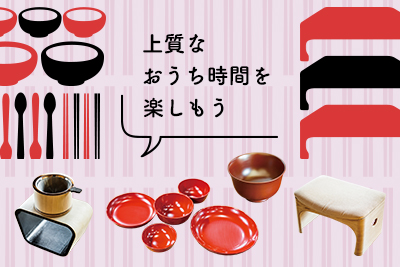
Lacquerware has long been popular in Japan as a local culture. Among them, Kiso lacquerware became popular as a souvenir for travelers on the Nakasendo road during the Edo period, and gradually developed into a daily necessity, and during the period of high economic growth in the Showa era, Kiso lacquerware zatable became a must-have for homes and inns. Nowadays, local craftsmen are evolving their traditional skills and passing them on to the next generation. Why not add color to your new life with Kiso lacquerware?
Kiso lacquerware, a traditional craft and traditional industry
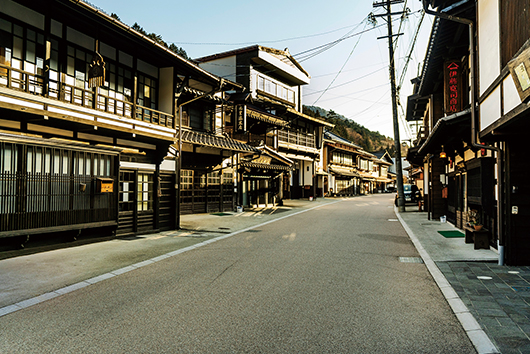
While there are lacquerware that have developed as art and crafts in castle towns, such as Kyoto lacquerware and Wajima lacquerware, which has flourished as a post town on the Nakasendo road, has developed as a daily necessity directly connected to people's lives.
There are approximately 100 lacquerware shops in the Kiso Hirasawa area, Shiojiri City, a major production area of Kiso lacquerware, and many craftsmen are active. "There are many craftsmen who can respond flexibly and are enthusiastic about studying," says Ota Hiroshi, executive director of the Shiojiri-Kiso Regional Local Industry Promotion Center, which sells and promotes local products in the Shiojiri-Kiso Regional Local Industry Promotion Center, which operates projects to revitalize production areas, and more. The efforts and technical skills of these craftsmen have been recognized, and for about 20 years, they have been working together as a producer to restore cultural assets, and have been working on restoring the works of Hiroshima's Itsukushima Shrine, Nagoya Castle Honmaru Goten, Ueno Toshogu Shrine, and more.
Recently, they have also collaborated with students from Showa Women's University to develop products from a woman's perspective. It was held in 1998 Nagano The fact that the Winter Olympic medals were produced here is due to the spirit of challenge from the craftsmen.
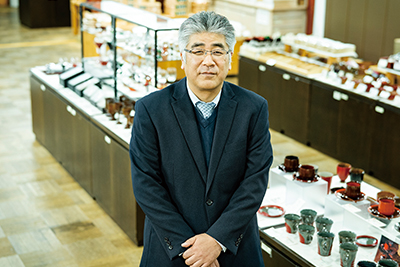
"When you think of "traditional crafts," there is a strong image of "things left behind," but Kiso lacquerware is a "traditional industry" that is constantly adopting new things to meet the needs of customers of the era, and is a "traditional industry" that is being passed down and evolved, while still retaining traditional techniques. That is why new initiatives are constantly being created as a production area. Nowadays, the number of colors used in lacquerware has increased, so I hope you can try using lacquerware in small areas as a color to add to your daily life."
Mr. Ota talks about this and conveys his passion for more people to feel the new lacquerware closer to you.
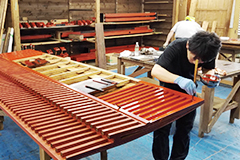
The Kiso Hirasawa area has been selected as the first lacquer town in the country to preserve the important traditional buildings. "The reason why Kiso craftsmen are able to create cultural assets is probably because they have a history of flexibly creating everything from small items to large furniture," says Ota. It is also apparently that Kiso lacquer craftsmen are able to work united as producers because of their cooperation.
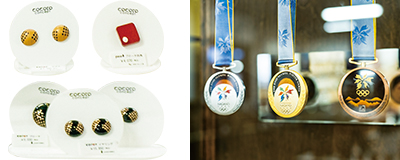
The Kiso Life Crafts Museum, run by the Shiojiri-Kiso Regional Local Industry Promotion Center, offers the purchase of Kiso lacquerware, including "cocoro concept" products, which are collaborated with students from Showa Women's University and craftsmen. Nagano You can watch the winning medals at the Winter Olympics.
[Shiojiri/Kiso Regional Local Industry Promotion Center]
2272-7 Kiso Hirasawa, Shiojiri City TEL 0264-34-3888
http://www.kiso.or.jp/
Creates unique Kiso lacquerware with original "ancient Akane lacquer"
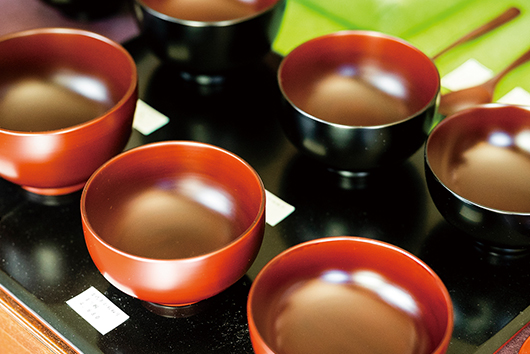
Ito Hiroshi Shoten
伊藤 寛茂さん
At Kiso Hirasawa, each craftsman is working hard to make his own ideas every day. Among them, Ito Kanshi Shoten, a long-established company founded in 1830, stands out with its unique coating called "Ancient Akane lacquer."
"Ancient Akane lacquer is dark vermilion immediately after applying it, but as you use it, its gloss and brightness increases," says Ito. It is said that there are differences in the lacquer composition, the proportion of pigments, the humidity in the room, and the drying method.
It was born about 40 to 50 years ago. The trigger was that as the main product of Kiso lacquerware, the zataku, gradually became less and less used in everyday life, and the production shifted to making accessories, the father of the previous generation, Ito, received a consultation from a department store in Tokyo.
"The idea was that a department store buyer asked if they could make lacquerware in a calmer colour than traditional vermilion. The previous and uncle completed the research, and after about a year of trial and error, the colour was completed. It is a colour that only we can produce."
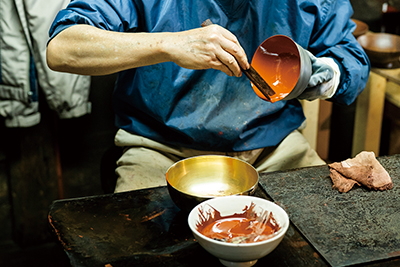
One of the things Ito Kanji Shoten specializes in is that it uses high-quality, precious Japanese lacquer, not the current mainstream Chinese lacquer, and refined and used "Tenpiter Kurome" as the top coat. "Ten-Hirokume" is a time-consuming purification method in which raw lacquer (kiurushi) collected from wood is stirred by hand while being exposed to the sun all day, gradually removing moisture and increasing clarity. Ito Kanji Shoten performs "Ten-Kurome" every summer, and by coating the lacquer on top, it creates lacquerware with a more comfortable feel and calm color.
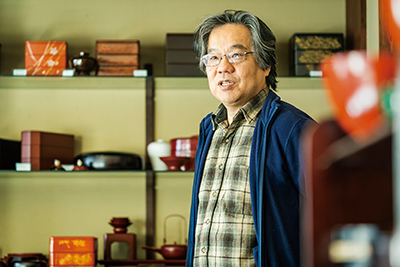
There are many fans of this "Ancient Akane Laver," and in response to requests from regular customers, he also made pasta plates, and he also made lacquerware knife and fork that can be used on this pasta plate if he were to do so.
"It's great that customers say, 'I'm glad I used it' and 'I feel like the usual food has improved a few times', which is what makes it a great gift for the maker.'
Ito cherish tradition and develops with flexibility. From now on, we will continue to create a variety of carefully selected items using DNA that creates new things that have been handed down from the previous generation.
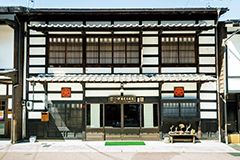
The red colour isTimesThe previous generation named it "Ancient Akane lacquer" as it seemed to be the brightening of Akane Sora. In addition to regular customers who visit Kiso every year, they also receive many orders as souvenirs and wedding gifts. In addition to this "Ancient Akane Laver," all products in the Ito Kanji Shoten store are coated with Japanese lacquer made from Tennichi Tekurome.

Lacquer is painted in a lacquerware (left of the photo), featuring a large window on the second floor. It is craftsmanship to pay close attention to dust and quickly apply it to the uniform thickness. Each bowl is made over two to three months. High-quality Japanese lacquer is soft and easy to apply, and even when it dries and hardens, it doesn't feel heavy. The craftsmen make their own tools, use different equipment and machines, and work efficiently by thinking about the steps they need to do.
[Ito Hiroji Shoten Co., Ltd.]
1607 Kiso Hirasawa, Shiojiri City TEL 0264-34-2034
http://www.bekkoame.ne.jp/ha/yamaichi/
INFORMATION
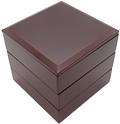
Ginza NAGANO Now on sale!
Ancient Akane Coat, 3rd Dance
41,800 yen
A new future for woodworking and lacquer using traditional and modern techniques
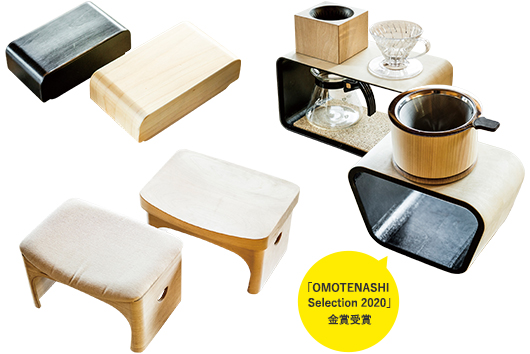
Okochi Furniture Workshop
Okochi Jun
Sowazen is a lacquered four-legged meal. The Kiso Hirasawa craftsmen were the ones who came up with a rational and uniform technique in the mid-Taisho period, combining alternating legs from a single piece of wood to remove wood without waste, and then using the technique of grinding (hikimage). Attracted by this technology and the beauty of the unique curve, Okochi Jun, a traditional Kiso lacquerware ware and daily necessities that are familiar to the present day, using the techniques of "Sowazen" to bending the grinding technique under the brand name "NOKO" is Okochi Jun, and is also a traditional craftsman of Kiso lacquerware.
"These meals are not used in our current lifestyles, but this is Kiso's identity, and I think the shape of the Sowa meals is also wonderful. So, we launched NOKO with the hope that by allowing them to be used in everyday life even today, we can connect the technologies that our ancestors have cultivated to the future."
So far, they have released lunch boxes, stools, coffee drippers and more. The method of painting lacquer is also finished using the suri lacquer technique, which conveys the rustic and warm taste of the wood grain. One of the selling points of NOKO is the "Made in Kiso Hirasawa" manufacturing, which involves making wood as a furniture workshop, and even lacquer.評判は上々で、コーヒードリッパー&スタンドは、日本の優れた商品・サービスを発掘・認定し、国内外に発信するプログラム「OMOTENASHI Selection(おもてなしセレクション)2020」第1期において金賞を受賞するほどです。
NOKO's commitment is to use modern technology in addition to traditional techniques to preserve it as an industry.
"While we want to preserve the traditions of our ancestors, it is very difficult to inherit the craftsmanship of our ancestors. So, we use an NC machine tool specially programmed for grinding to create grind grooves for grinding. I feel that authorizing the method through mechanization is one way to transfer the tradition to future generations."
Young craftsmen are also involved in traditional crafts, and all five craftsmen who work at the workshop are in their 20s and 30s. Products are produced that suit your current lifestyle.
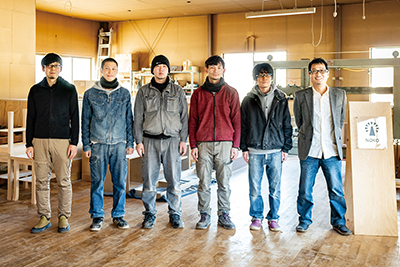
Okochi Furniture Studio is a place where young craftsmen work. Although Okochi (the far right in the photo) was from Nagoya City, he was fascinated by woodworking and moved to Kiso Hirasawa. He is a furniture craftsman with a 20-year career and is also a traditional Kiso lacquerware craftsman.

The NC machine tools handled by young craftsmen are programmed using traditional grinding groove machines that were handed over from Kichiya, a closed-off area. The young craftsman who paints lacquer is currently attending Kiso Urushi Art Institute, Shiojiri City, where he studies lacquer painting.
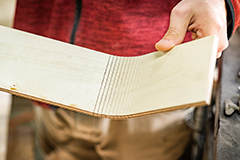
NOKO was born in 2017, based on the simple beauty of handicrafts that have been passed down in Kiso, such as "Sowa Zen", "Kiso Braided Wappa", and "Menpa". Both are made to order.
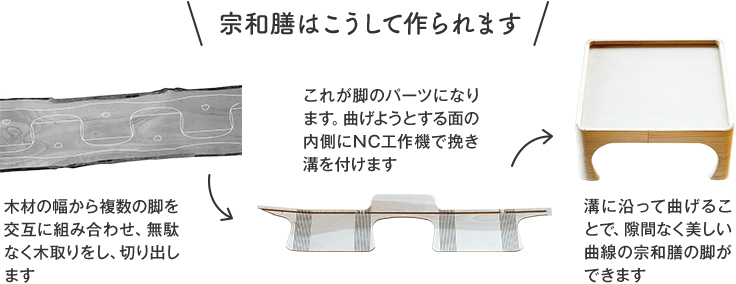
[Okochi Furniture Workshop Co., Ltd.]
2418-2 Kiso Hirasawa, Shiojiri City TEL 0264-34-3320
https://www.no-ko.net/
This article is information as of June 2020.
Please note that the products we carry may have changed.















